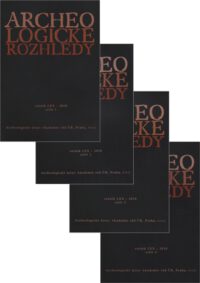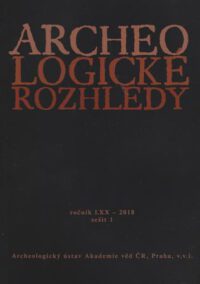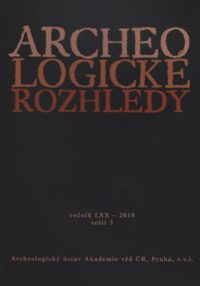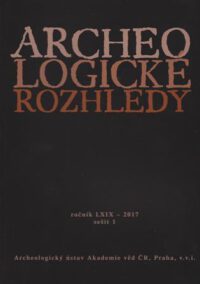The volume consisting of 12 chapters represents the result of scientific conference Who was King? Who was not King? The rulers and the ruled in the ancient Near East that was held in Prague in 2010. The conference was attented by distinguished scholars from various branches from Czech Republic, Germany, Austria, Poland, and France. Publication is devoted to various aspects of social structures interchangeable in time, power legitimacy, its loss and its visualisation, and ideologies in the ancient Near East. The volume covers quite an extensive period of time reaching from from the dawn of the third millennium BCE until the fall of Babylon in 539 BCE. *** Chapter 1: “The Poor Are the Silent Ones in the Country”. On the Loss of Legitimacy; Challenging Power in Early Mesopotamia (Gebhard J. Selz) Modern historians of ancient Mesopotamia are chiefly concerned with the deeds of the kings and mainly use sources which reflect conditions at the apex of Mesopotamian society. This paper attempts to investigate possible traces of discontent and opposition as well as the criteria involving the loss of the legitimacy of power in Early Mesopotamia. We will deal with two major types of sources: the early curse formulas in “royal” inscriptions, and the school-based tradition of Sumerian proverbs. Especially the latter allow for a more socially-balanced understanding of history. *** Chapter 2: The Earliest History of the Kingdom of Kiš (Petr Charvát) A black-stone bas-relief from Kiš, dating probably to the Uruk IV–III period, shows a scene interpreted, with recourse to an earlier image documented on one of the sealings from Susa B (= Susa Acropole 27–23) as depicting a symbolic transfer of political power. The possibility of a legitimization of the earliest kingdom of Kish from a source other than the Uruk-age Uruk polity is considered, and the possible consequences of such an act are weighed against the testimony of written sources of the ED I–III period. *** Chapter 3: Représentation et légitimation du pouvoir royal aux époques néo-sumérienne et amorrite (Bertrand Lafont) Dans la haute histoire du Proche-Orient ancien, l’image qu’offre l’institution royale est complexe et variée. Le titre même de LUGAL, « roi », est susceptible d’avoir été interprété de diverses façons. Cet article vise à montrer que, entre les deux périodes d’Ur néo-sumérienne et de Mari amorrite (fin du IIIe millénaire – début du IIe millénaire avant notre ère), le fil de certaines traditions touchant à l’institution royale et à la conception qu’on en avait ne fut jamais complètement interrompu, malgré la différence des contextes géographique et socio-historique. Plusieurs exemples sont pris dans les documentations de l’époque d’Ur III et de celle du temps des rois amorrites de Mari : persistance de l’héritage culturel sumérien, sacralisation de la personne du roi, election divine du souverain, attributs royaux, rôle symbolique des équidés. *** Chapter 4: History and Ideology in the Old Babylonian Year Names (Lukáš Pecha) The year names of Old Babylonian kings represent a very useful source of information not only on the contemporary royal ideology, but also on some historical events that were mentioned in those texts. In this contribution, the year names issued by the kings of Isin, Larsa and Babylon are compared. There are marked distinctions among the year names of the three dynasties with regard to the nature of events mentioned in them. In the year names of Isin dynasty, there are virtually no allusions to wars, whereas both the dynasties of Larsa and Babylon relatively frequently mention military successes. The year names of Babylon, unlike those of Isin and Larsa, contain no mentions of appointment of cultic personnel by the king. Further, in the year names of the Larsa dynasty, legal activity of the kings is completely omitted, while in the year names of Isin and Babylon such deeds occasionally figure. Besides, an interesting development can be observed during the reign of the 1st Dynasty of Babylon. In the late Old Babylonian period, the number of dedications of votive objects constantly rises whereas large building projects and military events are mentioned less frequently. This can perhaps be understood as a reflection of the gra dual decline of the Old Babylonian state. *** Chapter 5: König Haammurapi und die Babylonier: Wem übertrug der Kodex Hammurapi die Rechtspflege? (Walther Sallaberger) Hammurapi von Babylon schuf seine Gesetze für die Menschen seines Landes, vertreten durch ihre Götter, anlässlich der Neuordnung des Reichs. Es stellt sich die Frage, wie das im Kodex Hammurapi festgelegte Recht weiterhin gepflegt und erhalten werden sollte. Der Epilog scheint diese Aufgabe dem Nachfolger zuzuweisen, doch lassen sich in den rechtlichen Regelungen selbst drei zentrale Prinzipien erkennen: 1.) das Schriftlichkeitsprinzip bei Rechtsgeschäften, 2.) die Verpflichtung des Einzelnen zur gesellschaftlichen Verantwortung und 3.) die Fürsorgepflicht der städtischen Institutionen gegenüber dem Individuum. Das Rechtswesen erfordert und fördert also eine autarke Ordnung in der Zivilgesellschaft, im Prinzip zunächst unabhängig vom jeweiligen Königtum. Dem Palast werden dabei juristische Grenzen seines Handelns gezogen, so dass die Gesetze Hammurapis auch nicht zu einer Stärkung von Eliten aus dem Umfeld des Palastes führen. *** Chapter 6: The Daughters of the Kings of Babylon and their Role in the Old Babylonian Economy and Society (Witold Tyborowski) A very interesting fact connected with the nad?tum priestesses of Šamaš in Sippar is that one can find daughters of the kings of Babylon among them. Formally they were ordinary priestesses and surely they performed the same duties as the other women of that profession. Apart from that as many other nad?tum, the king’s daughters possessed land and other commodities which were ne cessary for their living and like the other priestesses they did business to make profit with it. One might expect also, that the presence and activity of the Babylonian princesses in the Sippar cloister might be significant somehow and it might be an informal link between the palace and the clergy and the city. However, the analysis of documents concerning the activity of the princesses shows that this did not happen and especially Iltani, daughter of Ab?-ešuh? might have separated herself from the other nad?tum and from the clergy of the Šamaš temple and cloister. Thus her life in Sippar did not have any major significance for the social life of the local community. *** Chapter 7: To Be King, or Not to Be King, or Much Ado About Nothing? The Concept of Royalty in the Amarna Correspondence (Jana Myná?ová) It has already been confirmed by a series of studies that the corpus of the Amarna letters, dated to the middle of the fourteenth century BCE, can be considered a set of diplomatic documents in all aspects entailed in this expression. This corpus of letters is hence closely related to the stage of international politics. But who was (a) king in the Amarna correspondence? Based on the textual analysis it is obvious that the political and social dependency of the local kinglets of Syria-Palestine upon the king of Egypt is evident not only from their frequent pleas for help but unambiguously also from the manner in which the Pharaoh is identified. It is the aim of this study to discuss several aspects of the king’s address attested in the respective bodies of the Amarna letters. *** Chapter 8: Wer war der (erste ugaritische) König? (Pavel ?ech) Antike Königslisten werden in der Altorientalistik – mit der Ausnahme der Angaben, die sich solcher Deutung durch entstellte Namen oder gekünstelte Lebensdauerangaben vom Haus aus widerstreben – hauptsächlich als historische Quellen angesehen und gewertet. Aber manchmal dienen die Königslisten primär keinen historiographischen oder chronographischen Zwecken, sondern sind eher Ausdruck politischer Theologie und deshalb Objekt der Soziolinguistik. Auf dem Beispiel der ugaritischen Königsliste wird dargestellt, dass ihre ersten Namen sog. Charaktonyme sind, welche die ugaritische Gründungslegende widergeben, somit die Stellung des Stadtstaates in der
Who Was King? Who Was Not King? The Rulers and the Ruled in the Ancient Near East
23,00 €
| Gewicht | 750 g |
|---|---|
| Bestellnr | 6-8-36 |
| Produktgruppe | Verkaufsprogramm |
| Reihe | Tschechische Literatur |
| Hauptgruppe | Einzeltitel |
| Untergruppe | Einzeltitel |
| ISBN | |
| KurzbezTitel | Who Was King? Who Was Not King? The Rulers and the Ruled in the Ancient Near East |
| Autor | Petr Charvát – Petra Ma?íková Vl?ková (eds.) |
| Erscheinungsjahr | Prague 2010 |
| TechnischeAbgaben | 161 Seiten, 13 Abbildungen, Tabellen, SW, 12 Beiträge in Englisch, Französisch oder Deutsch, 16 x 24 cm |
| Inhalt | The volume consisting of 12 chapters represents the result of scientific conference Who was King? Who was not King? The rulers and the ruled in the ancient Near East that was held in Prague in 2010. The conference was attented by distinguished scholars from various branches from Czech Republic, Germany, Austria, Poland, and France. Publication is devoted to various aspects of social structures interchangeable in time, power legitimacy, its loss and its visualisation, and ideologies in the ancient Near East. The volume covers quite an extensive period of time reaching from from the dawn of the third millennium BCE until the fall of Babylon in 539 BCE. *** Chapter 1: “The Poor Are the Silent Ones in the Country”. On the Loss of Legitimacy; Challenging Power in Early Mesopotamia (Gebhard J. Selz) Modern historians of ancient Mesopotamia are chiefly concerned with the deeds of the kings and mainly use sources which reflect conditions at the apex of Mesopotamian society. This paper attempts to investigate possible traces of discontent and opposition as well as the criteria involving the loss of the legitimacy of power in Early Mesopotamia. We will deal with two major types of sources: the early curse formulas in “royal” inscriptions, and the school-based tradition of Sumerian proverbs. Especially the latter allow for a more socially-balanced understanding of history. *** Chapter 2: The Earliest History of the Kingdom of Kiš (Petr Charvát) A black-stone bas-relief from Kiš, dating probably to the Uruk IV–III period, shows a scene interpreted, with recourse to an earlier image documented on one of the sealings from Susa B (= Susa Acropole 27–23) as depicting a symbolic transfer of political power. The possibility of a legitimization of the earliest kingdom of Kish from a source other than the Uruk-age Uruk polity is considered, and the possible consequences of such an act are weighed against the testimony of written sources of the ED I–III period. *** Chapter 3: Représentation et légitimation du pouvoir royal aux époques néo-sumérienne et amorrite (Bertrand Lafont) Dans la haute histoire du Proche-Orient ancien, l’image qu’offre l’institution royale est complexe et variée. Le titre même de LUGAL, « roi », est susceptible d’avoir été interprété de diverses façons. Cet article vise à montrer que, entre les deux périodes d’Ur néo-sumérienne et de Mari amorrite (fin du IIIe millénaire – début du IIe millénaire avant notre ère), le fil de certaines traditions touchant à l’institution royale et à la conception qu’on en avait ne fut jamais complètement interrompu, malgré la différence des contextes géographique et socio-historique. Plusieurs exemples sont pris dans les documentations de l’époque d’Ur III et de celle du temps des rois amorrites de Mari : persistance de l’héritage culturel sumérien, sacralisation de la personne du roi, election divine du souverain, attributs royaux, rôle symbolique des équidés. *** Chapter 4: History and Ideology in the Old Babylonian Year Names (Lukáš Pecha) The year names of Old Babylonian kings represent a very useful source of information not only on the contemporary royal ideology, but also on some historical events that were mentioned in those texts. In this contribution, the year names issued by the kings of Isin, Larsa and Babylon are compared. There are marked distinctions among the year names of the three dynasties with regard to the nature of events mentioned in them. In the year names of Isin dynasty, there are virtually no allusions to wars, whereas both the dynasties of Larsa and Babylon relatively frequently mention military successes. The year names of Babylon, unlike those of Isin and Larsa, contain no mentions of appointment of cultic personnel by the king. Further, in the year names of the Larsa dynasty, legal activity of the kings is completely omitted, while in the year names of Isin and Babylon such deeds occasionally figure. Besides, an interesting development can be observed during the reign of the 1st Dynasty of Babylon. In the late Old Babylonian period, the number of dedications of votive objects constantly rises whereas large building projects and military events are mentioned less frequently. This can perhaps be understood as a reflection of the gra dual decline of the Old Babylonian state. *** Chapter 5: König Haammurapi und die Babylonier: Wem übertrug der Kodex Hammurapi die Rechtspflege? (Walther Sallaberger) Hammurapi von Babylon schuf seine Gesetze für die Menschen seines Landes, vertreten durch ihre Götter, anlässlich der Neuordnung des Reichs. Es stellt sich die Frage, wie das im Kodex Hammurapi festgelegte Recht weiterhin gepflegt und erhalten werden sollte. Der Epilog scheint diese Aufgabe dem Nachfolger zuzuweisen, doch lassen sich in den rechtlichen Regelungen selbst drei zentrale Prinzipien erkennen: 1.) das Schriftlichkeitsprinzip bei Rechtsgeschäften, 2.) die Verpflichtung des Einzelnen zur gesellschaftlichen Verantwortung und 3.) die Fürsorgepflicht der städtischen Institutionen gegenüber dem Individuum. Das Rechtswesen erfordert und fördert also eine autarke Ordnung in der Zivilgesellschaft, im Prinzip zunächst unabhängig vom jeweiligen Königtum. Dem Palast werden dabei juristische Grenzen seines Handelns gezogen, so dass die Gesetze Hammurapis auch nicht zu einer Stärkung von Eliten aus dem Umfeld des Palastes führen. *** Chapter 6: The Daughters of the Kings of Babylon and their Role in the Old Babylonian Economy and Society (Witold Tyborowski) A very interesting fact connected with the nad?tum priestesses of Šamaš in Sippar is that one can find daughters of the kings of Babylon among them. Formally they were ordinary priestesses and surely they performed the same duties as the other women of that profession. Apart from that as many other nad?tum, the king’s daughters possessed land and other commodities which were ne cessary for their living and like the other priestesses they did business to make profit with it. One might expect also, that the presence and activity of the Babylonian princesses in the Sippar cloister might be significant somehow and it might be an informal link between the palace and the clergy and the city. However, the analysis of documents concerning the activity of the princesses shows that this did not happen and especially Iltani, daughter of Ab?-ešuh? might have separated herself from the other nad?tum and from the clergy of the Šamaš temple and cloister. Thus her life in Sippar did not have any major significance for the social life of the local community. *** Chapter 7: To Be King, or Not to Be King, or Much Ado About Nothing? The Concept of Royalty in the Amarna Correspondence (Jana Myná?ová) It has already been confirmed by a series of studies that the corpus of the Amarna letters, dated to the middle of the fourteenth century BCE, can be considered a set of diplomatic documents in all aspects entailed in this expression. This corpus of letters is hence closely related to the stage of international politics. But who was (a) king in the Amarna correspondence? Based on the textual analysis it is obvious that the political and social dependency of the local kinglets of Syria-Palestine upon the king of Egypt is evident not only from their frequent pleas for help but unambiguously also from the manner in which the Pharaoh is identified. It is the aim of this study to discuss several aspects of the king’s address attested in the respective bodies of the Amarna letters. *** Chapter 8: Wer war der (erste ugaritische) König? (Pavel ?ech) Antike Königslisten werden in der Altorientalistik – mit der Ausnahme der Angaben, die sich solcher Deutung durch entstellte Namen oder gekünstelte Lebensdauerangaben vom Haus aus widerstreben – hauptsächlich als historische Quellen angesehen und gewertet. Aber manchmal dienen die Königslisten primär keinen historiographischen oder chronographischen Zwecken, sondern sind eher Ausdruck politischer Theologie und deshalb Objekt der Soziolinguistik. Auf dem Beispiel der ugaritischen Königsliste wird dargestellt, dass ihre ersten Namen sog. Charaktonyme sind, welche die ugaritische Gründungslegende widergeben, somit die Stellung des Stadtstaates in der |
| Besonderheiten |






